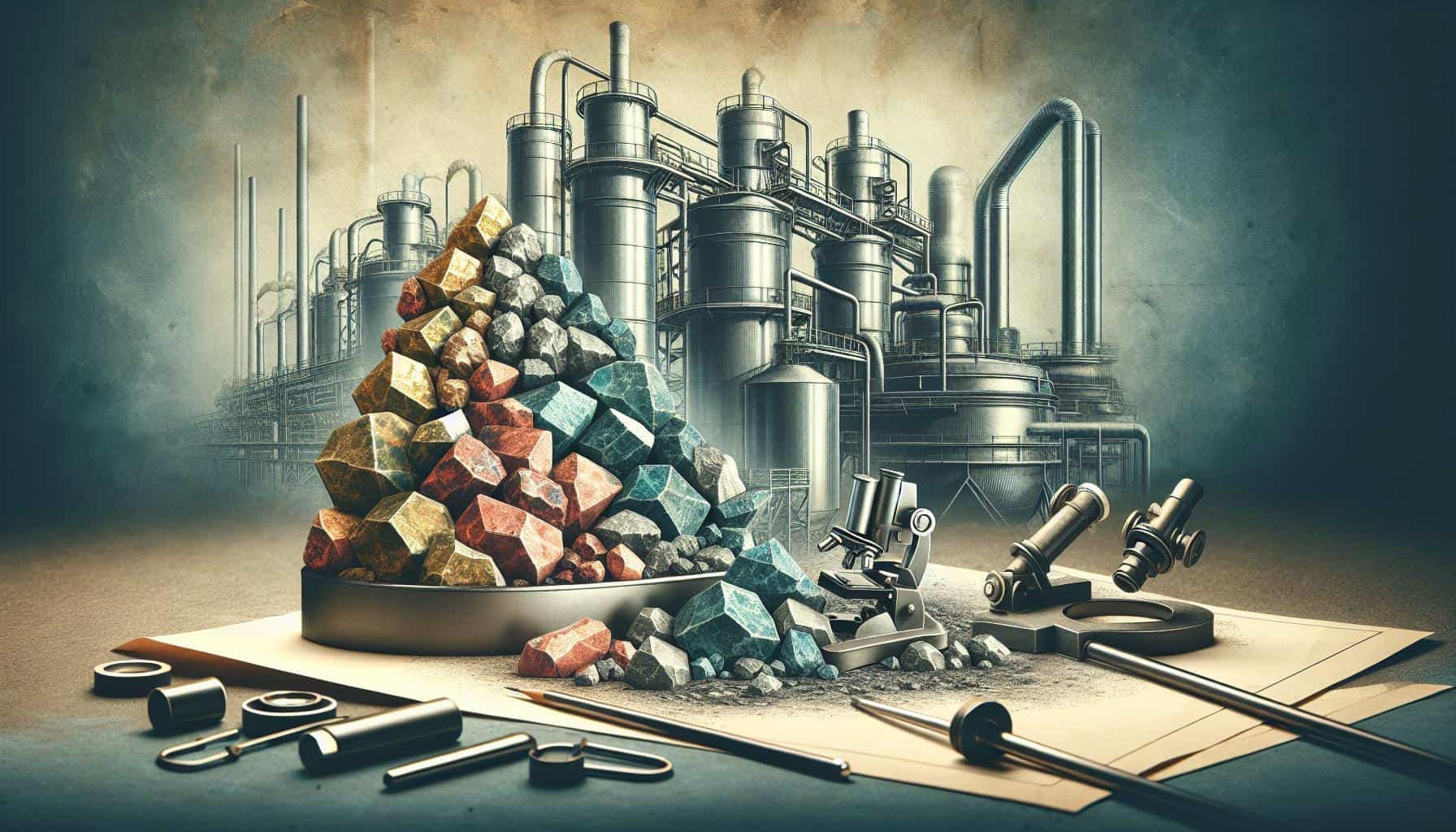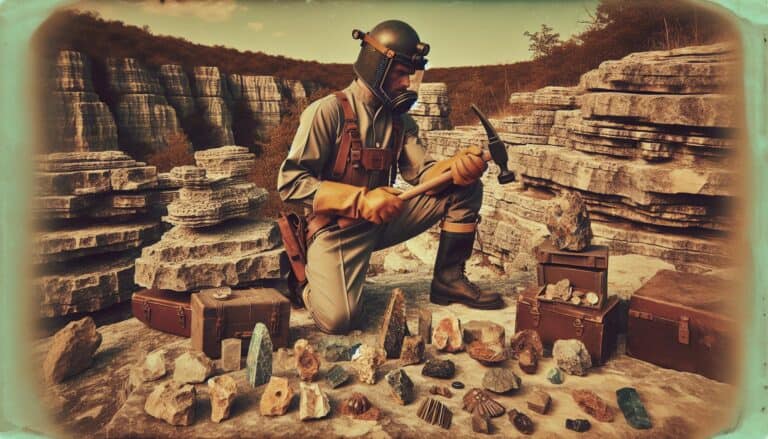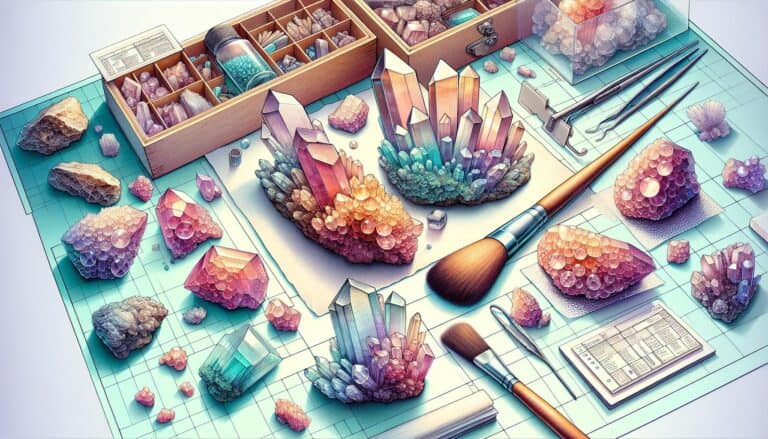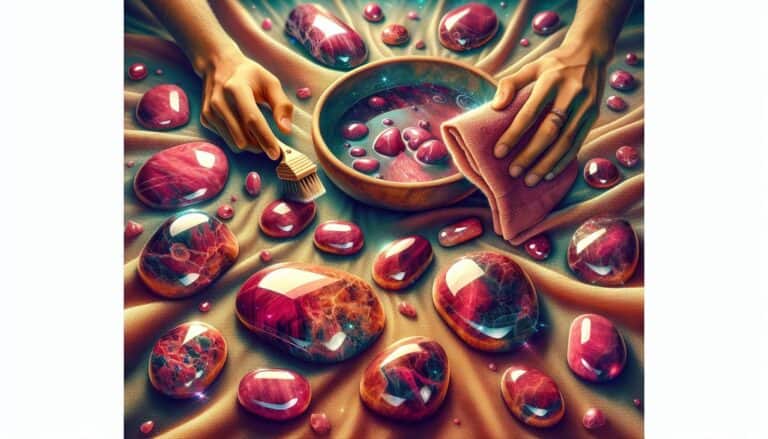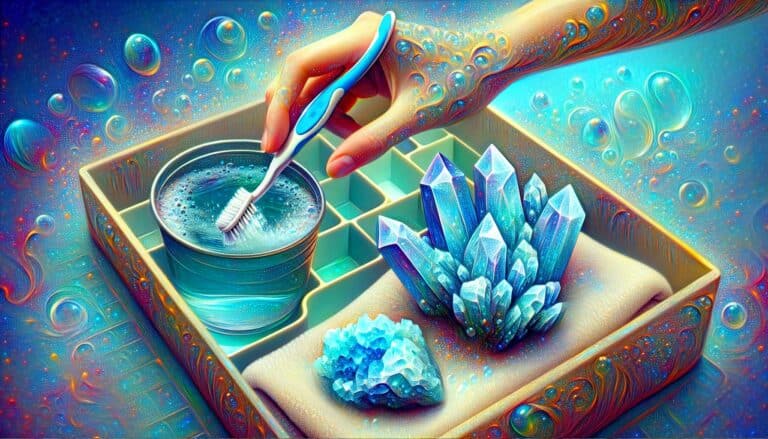Ever wondered about the value of chromite, the mineral that’s a key ingredient in stainless steel?
You’re not alone. Chromite’s worth hinges on its demand in various industries, from metallurgy to refractories.
As you delve into the world of minerals and their market dynamics, you’ll find that chromite prices aren’t static. They fluctuate based on factors like quality, location, and market demand.
Let’s explore what influences chromite’s value and how it’s priced in the global market.
Chromite value is influenced by color, clarity, chromium concentration, and market demand. High-quality chromite with rich color and high chromium content fetches higher prices. Ensure authenticity through certification and buy from reputable sources for true worth.
What Is Chromite?
Chromite is a naturally occurring mineral composed primarily of iron, chromium, and oxygen, known scientifically as iron chromium oxide (FeCr2O4). It’s the only ore of chromium, a metal essential for the production of stainless steel and various alloys that require resistance to both corrosion and high temperatures.
The mineral forms in ultramafic rocks such as peridotite and also appears in layered intrusions known as anorthosites. Chromite crystals typically display a submetallic luster and a dark brown to black color. These distinct physical properties make chromite easily identifiable in geological formations.
With a Mohs hardness of 5.5, chromite is moderately hard, which allows it to withstand harsh physical processes without significant degradation. Therefore, it plays a significant role in refractory applications — materials that retain strength at high temperatures. In refractories, chromite is valued for its high heat stability and resistance to thermal shock.
Moreover, chromium, which is extracted from chromite, is a crucial element in the manufacturing of various metal products, leather tanning, and even in the production of green glass. As such, chromite’s worth is deeply connected to these industrial applications, and as they expand, so does the interest in chromite deposits.
Chromite’s occurrence in different regions across the globe means that its availability is subject to geopolitical and environmental contexts. Accessibility and mining conditions in countries like South Africa, Kazakhstan, India, and Turkey—significant chromite producers—play major roles in determining its supply and, ultimately, its market price.
Discovering chromite deposits is typically followed by an assessment of ore quality, which depends on factors such as the chromium-to-iron ratio, the presence of impurities, and the size of reserves. High-quality chromite ores with favorable chromium-to-iron ratios and low levels of impurities fetch higher prices on the market and are more sought after by industries.
As industries continue to require chromium for various applications, the geology, mining, and refinement of chromite remain critical topics in understanding the full potential value of this mineral.
Chromite Prices: Factors That Affect Value

Understanding the factors that affect chromite prices can help you grasp why this mineral varies in value and what drives its market price. Here, you’ll learn about the defining aspects that influence chromite’s worth.
Color, Clarity, and Cut Quality
When it comes to minerals like chromite, certain physical characteristics can impact their value. Color is one of these crucial attributes. Chromite with a vibrant color is often more sought after. The mineral typically possesses a blackish-brown hue, but any unique or distinct coloration can increase its desirability.
Clarity also plays a part. Chromite is generally opaque, but high clarity within the opaque category makes it preferable for specific industrial uses where appearance is a factor.
Lastly, cut quality can be significant, especially for chromite used in decorative or aesthetic applications. A skillful cut that enhances the stone’s inherent properties without wasting material can optimize its use and, subsequently, its value.
Market Demand and Availability
Chromite’s value is deeply affected by market demand. This demand fluctuates based on its applications across various industries that rely on chromium, such as stainless steel production, which requires a consistent supply.
- Demand in the manufacturing sector
- Use in the creation of refractory materials
- Popularity in the fashion industry for chrome plating
Availability is another deciding factor. You’ll find that prices spike during shortages caused by mining strikes, geopolitical tensions in producing countries, or trade restrictions. Conversely, when chromite is abundant and easily extracted, prices may fall.
A detailed look at market analytics from past years shows a trend in price fluctuations correlating with demand and production outputs from major chromite-producing regions. These trends are indicative of the volatile nature of mineral commodities like chromite.
| Year | Average Price USD per Metric Ton |
|---|---|
| 2020 | 200 |
| 2021 | 220 |
| 2022 | 250 |
Be aware that these numbers are estimates and can differ widely depending on ore quality and international market conditions. Keep an eye on industry reports and market news for real-time updates on chromite’s value.
Understanding Chromite: A Rare Gem
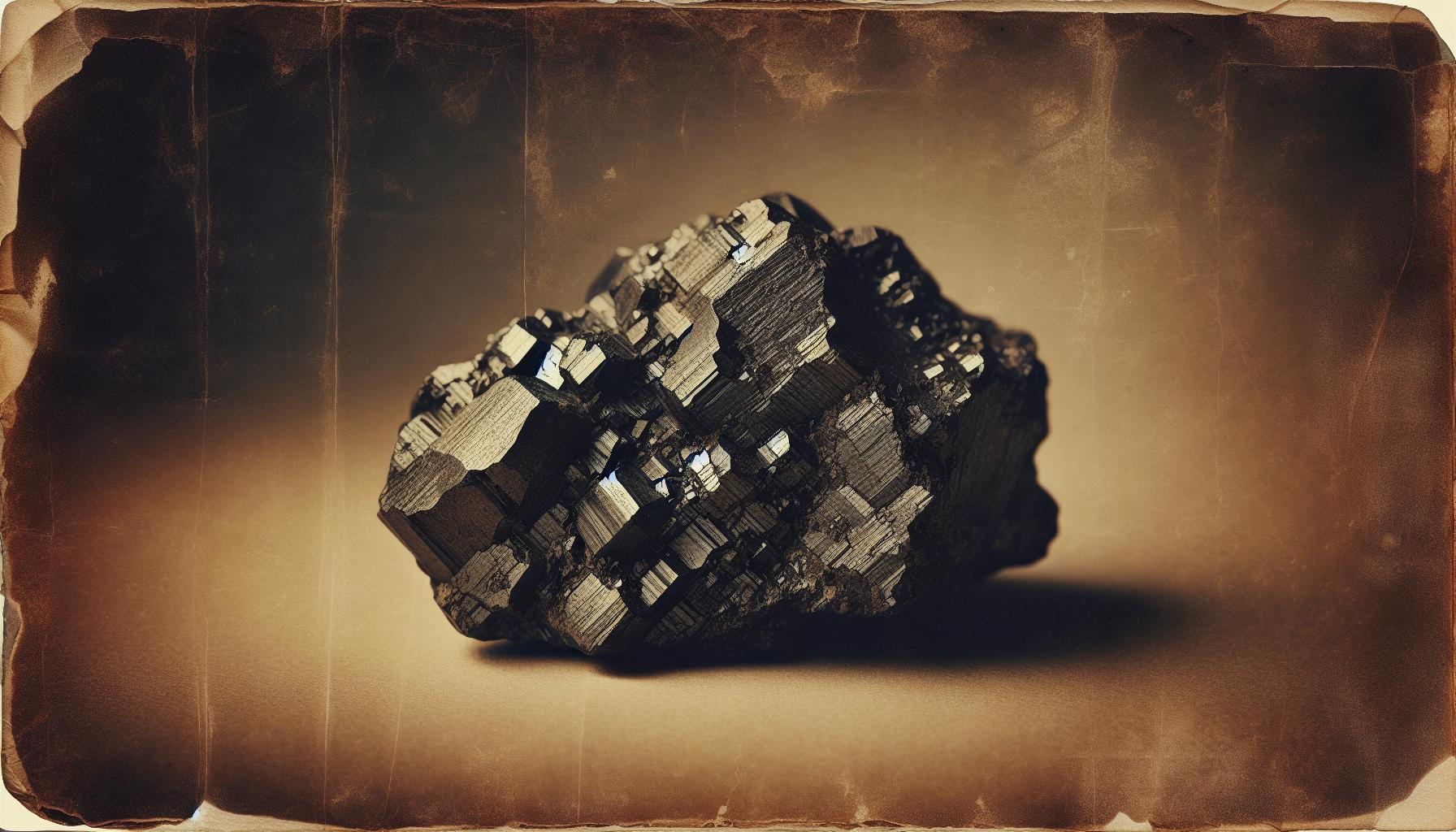
The Rarity of Chromite
In the realm of minerals, chromite stands out due to its uncommon occurrence. Chromite is rare and challenging to find, contributing to its higher value on the market. As a buyer or enthusiast, you should know that the rarity of chromite is directly tied to its geological formation. This mineral is primarily found in the Bushveld Complex in South Africa, among a few other deposits across the globe. Since chromite requires specific geological conditions to form, these deposits are not widespread, making each find particularly significant.
Mining chromite is a complex process, largely because of the careful handling required to preserve its quality. The mineral’s abundance, or lack thereof, is also influenced by the economic feasibility and environmental regulations surrounding mining practices in chromite-rich regions. These factors, when combined with the demand in industrial applications, ensure that chromite’s rarity is maintained, thus, affecting its price.
Origins and Characteristics
Chromite’s origins are as fascinating as its rarity. It’s primarily derived from the igneous rock known as peridotite. The key to chromite’s formation lies within the Earth’s mantle, where high temperatures and pressures transform raw elements into this sought-after mineral. You might find it interesting that chromite is actually a part of the spinel group, possessing an array of physical characteristics that make it unique.
Let’s dive into the specifics:
- Color: Typically ranging from black to brownish-black, the color of chromite can vary, and it’s often a significant factor in its identification.
- Clarity: Chromite is generally opaque, which differentiates it from other minerals that might be transparent or translucent.
- Cut Quality: Since chromite isn’t typically used in jewelry, the cut quality isn’t as critical as with gemstones. However, a well-defined cut can still influence the overall value for collectors.
Alongside these attributes, the chemical composition of chromite – consisting mainly of iron, chromium, and oxygen – renders it indispensable for various industries. It’s particularly prominent in the manufacturing of stainless steel and as an alloying agent due to its high heat resistance. The robust nature and versatility of chromite underscore its importance and contribute to its worth in the marketplace.
Chromite Grading and Valuation
The Grading System for Chromite
When you’re looking to assess the value of chromite, understanding the grading system is crucial. This system is designed to evaluate the quality of the mineral based on several critical factors. Color, clarity, and cut are just the beginning – industry experts also consider the size of the chromite deposits and the concentration of chromium.
- Color: A richer, darker hue generally indicates a higher chromium content, which is more desirable.
- Clarity: Like many minerals, the fewer the impurities, the more valuable the specimen.
- Cut: Although not a gemstone, how chromite is extracted and processed can affect its overall quality and market appeal.
- Size: Larger deposits can indicate a more lucrative yield, influencing overall worth.
- Chromium concentration: The higher the chromium content, the more valuable the chromite ore.
Industry standards are not universally set, so grades can vary depending on the region and the specific market demand. However, buyers will always be looking for the highest quality ore, which fetches the best price.
Certification and Appraisal
To determine chromite’s exact value, certification and appraisal from a credible source are often necessary. These evaluations are performed by professional geologists or specialized institutions that have the expertise to accurately assess mineral worth. During an appraisal, the ore’s physical and chemical characteristics are thoroughly examined, and the quality is benchmarked against current market trends and prices.
Certification can come in the form of a Report of Analysis issued by a laboratory, which confirms the chemical composition and the chromite’s grade. If you’re in the business of buying or selling chromite, it’s in your best interest to obtain such certification, as it can significantly aid in negotiating prices.
Professional appraisals are particularly important when determining the value of a new chromite deposit. These appraisals take into account both the current and projected demand for chromium, as well as the economic viability of extracting the mineral from the deposit.
Above all, remember that the value of chromite is inherently linked to the robustness of the industries that rely on it, such as the stainless steel and refractory industries. The flucuating needs of these sectors heavily influence both demand and price, making an expert valuation an indispensable tool for anyone involved in the chromite market.
Current Market Trends in Chromite Pricing
Understanding the current market trends in chromite pricing is crucial if you’re in the business of buying or selling this mineral. Chromite prices have shown volatility in recent years, influenced by various factors globally. Major producers such as South Africa, Kazakhstan, India, and Turkey play significant roles, as their socio-economic and political situations can impact supply and, consequently, pricing.
In the market, high-quality chromite—with desirable concentration and properties—commands a higher price. Fluctuations in the stainless steel industry, which is the primary consumer of chromite, directly affect chromite prices. When the demand for stainless steel rises, so does the need for chromite, leading to higher prices. On the flip side, a downturn in steel production can result in a surplus of chromite, causing prices to drop.
Environmental regulations also shape the market trends. Stricter environmental laws in countries such as China have led to the preferential use of high-grade chromite. This shift increases demand and cost for high-grade materials while lowering demand for lower grades.
The table below summarizes the trend of chromite pricing over the past year:
| Period | Average Price per Metric Ton |
|---|---|
| Q1 2022 | $120 |
| Q2 2022 | $130 |
| Q3 2022 | $125 |
| Q4 2022 | $135 |
Pricing can be influenced by logistics and shipping costs, which have faced unpredictability amid global crises. Innovations in mining technology that increase production efficiency could potentially lower costs, while geopolitical tension in producer countries could lead to price spikes.
Investor interest in mining ventures and new deposit discoveries could also contribute to a dynamic pricing landscape. As new regions come into play with accessible chromite deposits, the competition might adjust prices accordingly.
Keep an eye on emerging economies as they ramp up infrastructure projects—they’re poised to increase the demand for this valuable mineral. It’s these very trends in global markets that require constant attention to protect your investment and capitalize on the shifting sands of chromite’s worth.
The Most Expensive Chromite
When exploring the chromite market, you’ll discover that certain factors heavily influence the price, pushing some chromite to the upper echelons of value. High-quality chromite with exceptional purity and larger gatherable deposits often command the highest prices.
Strategic locations also play a crucial role in valuation. Deposits found in geopolitically stable regions with well-established mining infrastructure may reduce extraction and transportation costs, increasing their market worth.
Interestingly, the most expensive chromite isn’t just a matter of composition or location; it’s also about timing. During periods of peak demand from core industries like stainless steel manufacturing, prices surge. Here’s what you must watch out for to spot the most expensive chromite:
- Chromium Concentration: Above 46% is considered premium grade, demanding top dollar.
- Crystalline Structure: Finer crystals with fewer impurities ease the refining process, adding to the value.
- Size and Accessibility of Deposits: Larger and easily accessible deposits reduce operational costs and are thus more valuable.
Industry Demand and Trends:
Often, when the market is thriving and demand outpaces supply, even standard chromite can fetch premium prices.
Innovation and Technology:
Advancements in technology that lead to more efficient mining and processing methods can, paradoxically, either increase the value due to lower production costs or decrease it by flooding the market with greater supply.
Here’s a snapshot of some of the latest recorded prices for high-grade chromite, giving you an insight into the top tier of the market:
| Grade | Price Range |
|---|---|
| Metallurgical High-Grade Lump | $390 – $430/ton |
| Metallurgical High-Grade Fines | $350 – $390/ton |
| Refractory Grade Chromium Ore | $400 – $450/ton |
| Chemical Grade Chromium Ore | $390 – $440/ton |
Prices are consistent with the intricate interplay between these determining factors, reminding you that the most expensive chromite is a moving target, influenced by an ever-shifting market landscape. Keep your eyes peeled for not just the quality, but also external factors that contribute to chromite’s peak pricing moments.
Buying Chromite: Tips and Recommendations
When you’re on the hunt for high-quality chromite, the value you get for your investment hinges on where you purchase and how you verify the authenticity and value of the chromite.
Where to Purchase High-Quality Chromite
To secure the best value, purchase chromite from reputable dealers or direct from mining companies. This ensures that you’re getting a product that’s passed through fewer hands, potentially reducing costs and increasing traceability. Here are some avenues for purchasing high-quality chromite:
- Mining Companies: Contacting mining companies directly can give you access to firsthand information and premium-grade chromite.
- Mineral Shows: These events are goldmines for collectors; you’ll find a variety of sellers and can inspect the chromite personally.
- Online Marketplaces: While convenient, be cautious and seek out well-reviewed sellers with credible certifications.
- Authorized Dealers: Establish a relationship with certified dealers known for sourcing high-grade minerals.
When purchasing, don’t hesitate to request documentation such as certificates of analysis or origin, which provide valuable details about the chromite’s quality and authenticity.
Ensuring Authenticity and Value
To ensure you’re making a wise purchase, consider the following:
- Ask for Proof: Certificates of authenticity, lab reports, and provenance documents can confirm the chromite’s authenticity.
- Seek Professional Appraisals: Engaging a mineral appraiser can provide an unbiased assessment of your chromite’s value.
- Understand Market Trends: Stay informed about industry trends and price fluctuations to make knowledgeable purchases.
- Investigate the Seller’s Reputation: Research and reviews can tell you a lot about the seller’s reliability and the quality of their products.
Remember, the value of chromite is in its application and rarity. Whether you’re buying for personal collection, industrial use, or investment, quality and authenticity are paramount. Keep abreast of market conditions and make a well-informed decision.
Conclusion: The True Worth of Chromite
Understanding chromite’s worth isn’t just about knowing the current market price.
It’s about recognizing the nuances that determine its value. You’ve learned that factors like color, clarity, and chromium content play pivotal roles. Remember, buying high-quality chromite means dealing with reputable sources and insisting on proper documentation. Stay savvy about market trends to ensure you make informed purchases.
With this knowledge, you’re now equipped to navigate the complex world of chromite valuation with confidence.

